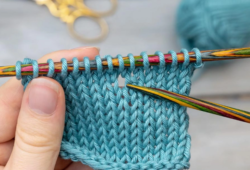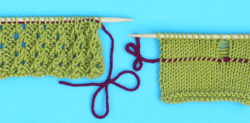It can be upsetting if you make a mistake when knitting, but knowing how to fix the most common issues can really take the stress out of the situation.
Knitting is seen as cool these days but you can get hot under the collar when things go wrong. Let’s take a look at some of the most common knitting mistakes and what sort of things you need to know to put things right.
Tools you need
There are a few tools that you should aim to have in your knitting bag so you’re ready to fix any issues. These include some small needles with double points, waste yarn, tapestry needles, stitch markers and crochet hooks.
Fixing techniques
There is a range of techniques that you can employ to fix specific mistakes. These include:
Unknitting: This is also known as ‘tinking’ and involves undoing a new stitch from the needle on the right and returning your old stitch to the left.
Rip out rows: You can use a smaller-gauge needle and pick up a loop of each stitch in a row.
Prevent starting mistakes: You can avoid working your first stitch as a pair of stitches. This is where your working yarn goes over the needle instead of under at the end of a row.
Along with fixing mistakes, it is also important to know how to prevent problems. This includes stopping issues with tangled yarn by always stranding right over left and vice versa and not pulling too tightly on strands across the back. The latter can cause your stiches to pucker.
Prevention is important whether you are designing your own projects or making use of knitting kits from companies such as https://www.woolcouturecompany.com.
Adding a lifeline
Placing a lifeline in your work is a great way of safeguarding against catastrophic mistakes. This is a point in your project where you can easily rip back to without having to scrap the whole thing.
Other techniques that can prove useful include laddering down to fix mis-crossed cable stitches, and Swiss darning, which is useful for sorting out weak spots or small holes.





